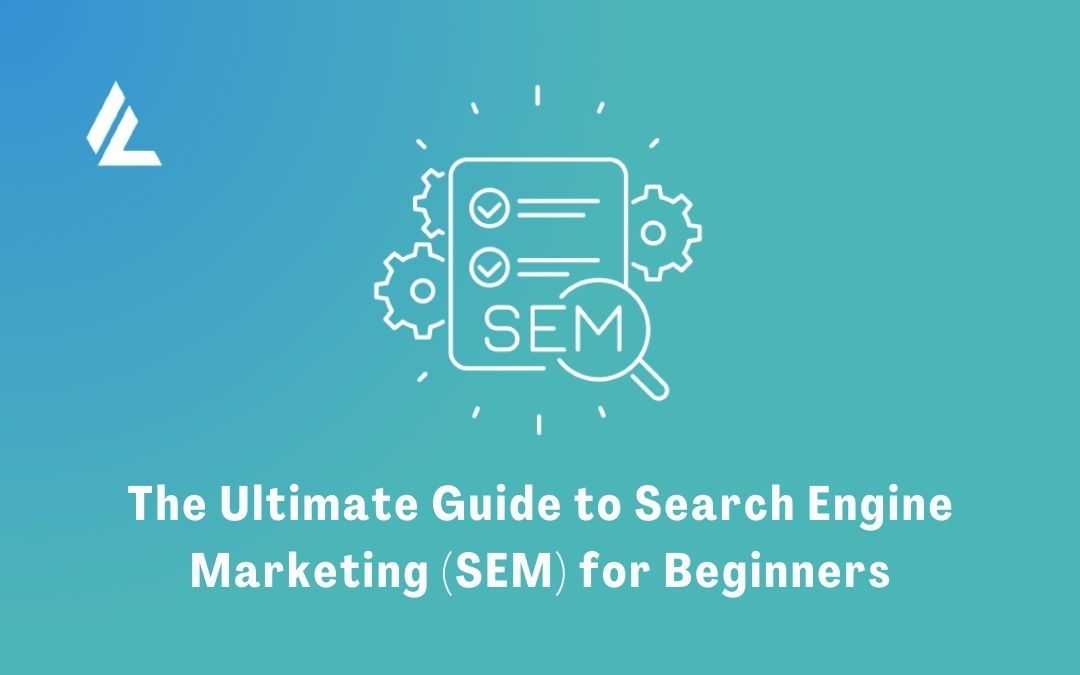Table of Contents
Search Engine Marketing (SEM) has become essential for companies looking to improve their online visibility in today’s digital world. Understanding SEM can greatly enhance your visibility, drive traffic, and increase conversions—regardless of the size of your company. This tutorial aims to familiarize novices with the fundamentals of search engine marketing, assisting them in appreciating its significance and figuring out where to begin.
What is Search Engine Marketing?
Search Engine Marketing (SEM) is a type of online marketing where websites are promoted using paid advertising that raises their exposure in search engine results pages (SERPs). Search Engine Marketing (SEM) is buying advertising at the top or bottom of search engine results when users type in specified keywords. This is in contrast to Search Engine Optimization (SEO), which focuses on ranking better in search results organically.
SEM primarily involves using platforms like Google Ads and Bing Ads, where businesses bid on keywords relevant to their products or services. When users search for these keywords, the search engine displays the ads in prominent positions, thus increasing the likelihood of clicks and conversions. The core principle of SEM lies in understanding the intent behind search queries and matching it with targeted ads that fulfill users’ needs.
Businesses can benefit from SEM in two ways: first, it guarantees that their ads show up prominently when prospective buyers are actively looking for similar goods or services, and second, it enables targeted advertising based on keywords, location, demographics, and other criteria. SEM is an essential weapon in the toolbox of digital marketing because of its targeted approach, which raises the likelihood of turning visitors into consumers.
Why is Search Engine Marketing Important?
Search Engine Marketing is crucial for businesses because it provides an immediate and effective way to reach potential customers. Here are some reasons why SEM is an essential tool for any digital marketing strategy:
1. Instant Visibility: The capacity of SEM to provide instant visibility is one of its most important benefits. SEM offers quick visibility, in contrast to SEO, which may take months to provide results. Once your campaign is live, search results may include your adverts. This helps new companies and product launches especially because it gives them a rapid way to become visible and draw in potential clients.
2. Targeted Advertising: SEM gives you remarkably accurate control over which audiences to target. Your audience can be defined by keywords, region, language, demographics, and even the time of day. By ensuring that the most relevant audience sees your advertising, this degree of targeting raises the possibility of clicks and conversions. For example, a nearby company
3. Measurable Results: Another key benefit of Search Engine Marketing is its measurability. Unlike traditional advertising methods, SEM provides detailed metrics that allow you to track the performance of your campaigns. You can monitor clicks, impressions, conversion rates, cost-per-click (CPC), and return on investment (ROI) with great accuracy. This data-driven approach enables you to make informed decisions and optimize your campaigns for better results.
4. Cost-Effective: SEM can be highly cost-effective, especially if you use a pay-per-click (PPC) model. With PPC, you only pay when someone clicks on your ad, ensuring that your marketing budget is spent efficiently. Moreover, SEM platforms like Google Ads allow you to set a daily budget, giving you control over your spending. By continuously monitoring and optimizing your campaigns, you can achieve a high return on investment without overspending.
Please Check Out Our Blog Related to Search Engine Marketing

Getting Started with Search Engine Marketing
Now that you understand the importance of SEM, let’s dive into how you can get started with your first campaign. Whether you’re new to digital marketing or looking to expand your existing efforts, these steps will guide you through the process of setting up and optimizing your SEM campaigns.
1. Keyword Research
An SEM campaign’s keyword research is its cornerstone. The words or phrases that people enter into search engines to find information are known as keywords. The correct keywords for your adverts are essential if you want to target your audience successfully.
Finding the terms and phrases your target clients use when looking for goods or services similar to yours is an important part of conducting effective keyword research. Create a list of relevant keywords for your business by brainstorming first, and then utilize keyword research tools such as Ahrefs, Google Keyword Planner, or SEMrush to narrow down your list. These tools help you choose the most relevant and economical keywords for your campaign by offering insightful data on keyword search volume, competition, and cost-per-click.
In addition to targeting broad keywords, consider using long-tail keywords—more specific phrases that may have lower search volume but often result in higher conversion rates. For example, instead of targeting the broad keyword “shoes,” you might target “women’s running shoes” or “affordable running shoes.” Long-tail keywords are often less competitive and can attract more qualified leads.
2. Setting Up Your Campaign
Once you have your keywords, the next step is to set up your SEM campaign. Most SEM campaigns are run on platforms like Google Ads or Bing Ads, which offer user-friendly interfaces to help you create and manage your ads.
Choose the kind of campaign you want to launch first. For example, Google Ads provides a range of options, such as Shopping campaigns for e-commerce businesses, Display Network campaigns for visual ads that appear on websites across the internet, Text Network campaigns for Google search results, and Video campaigns for YouTube ads. A Search Network campaign, which concentrates on placing text ads straight in search engine results, is sometimes the greatest location for novices to start.
Write your ad copy after that. The main advantages of your product or service should be highlighted in your ad copy, which should be convincing, clear, and brief. Enhance click-through rates and increase relevancy by incorporating your target term within the ad headline and description. Include a compelling call-to-action (CTA) that motivates visitors to proceed, such as “Shop Now,” “Get a Quote,” or “Learn More.”
You must specify your targeting choices after putting your adverts in place. Establish your bid strategy and include the regions, languages, and demographics you wish to target. There are two types of bidding choices available in Google Ads: automated bidding, in which Google modifies your bids to optimize clicks or conversions, and manual bidding, in which you set the value for each keyword. Set your daily spending limit and start your campaign now.
3. Monitoring and Optimization
Once your campaign is live, the work doesn’t stop there. Monitoring and optimization are crucial to ensure its success. SEM is a dynamic process that requires continuous attention to maximize results.
Start by keeping a close eye on important performance indicators such as conversion rate, cost per click (CPC), click-through rate (CTR), and return on ad spend (ROAS). You may learn how well your advertisements are performing and where they might need to be improved by looking at these stats. A low CTR could mean that your audience isn’t connecting with your keywords or that the ad copy needs to be adjusted. If your conversion rate is lower than you anticipated, think about checking that your landing page offers a seamless user experience and is consistent with the message of your advertisement.
A/B testing, also known as split testing, is a powerful technique for optimizing your SEM campaigns. By testing different versions of your ads—such as variations in the headline, description, or call-to-action—you can determine which version performs better and refine your ads accordingly. This iterative process helps you continually improve your campaign’s effectiveness.
It’s crucial to modify your bids and budget allocation in response to performance in addition to testing. Consider raising your bids or directing a larger portion of your money toward high-performing keywords or advertisements if they are generating more conversions at a cheaper cost. On the other hand, think about halting or decreasing your bids for any keywords that are performing poorly or costing excessively.
Lastly, refine your targeting over time. As you gather data from your campaigns, you may discover new audience segments or geographic locations that perform well. Adjust your targeting settings to focus more on these high-performing areas, and consider excluding segments that aren’t delivering results.
Conclusion
Search Engine Marketing is a powerful tool in the digital marketing arsenal. By understanding and implementing these fundamental steps, even beginners can create effective SEM campaigns that drive traffic, increase visibility, and generate leads. With continuous learning and adaptation, you can maximize the impact of your SEM efforts and achieve your marketing goals. Whether you’re looking to attract new customers, promote a product, or build brand awareness, SEM provides the flexibility and precision needed to succeed in today’s competitive online landscape.

